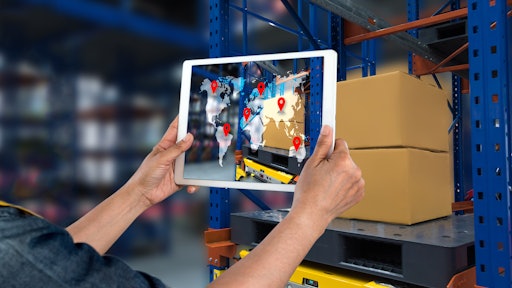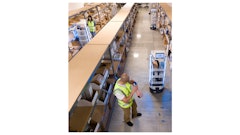
If the past two years of the pandemic—and pandemic-related supply chain issues—have taught us anything, maximizing efficiency through wireless connectivity should be a warehouse manager’s top priority. When dealing with nonperishable items, like toilet paper or painting supplies, it can be an inconvenience if it takes an extra week or two to leave the warehouse and arrive in the stores for customers to buy. However, the product could spoil or begin to rot if it has a shelf-life of only a few weeks. Perishables to worker shortages present their challenges, but valuable technological innovation allows for a consistent workflow to become possible even when external obstacles arise when it comes to warehouse operating systems.
Why M2M is vital
The majority of warehouses require them to have fixed infrastructure due to the age of the operations. This infrastructure includes fiber optic cables, ethernet, cell towers, wireless access points, and several other fixed devices. Thus, there are logistical limitations associated with these technologies due to their inability to be as flexible as the modernized machinery (such as autonomous systems) deployed throughout. Machine-to-machine (M2M) wireless connectivity aims to alleviate this problem by giving the ecosystem a revamped, untethered approach.
M2M wireless systems are a fantastic option for warehouse managers and operators looking to streamline their employees’ workloads. Such a wireless ecosystem helps keep up with the fulfillment demands of production and enhances productivity speed, safety, and accuracy. That said, wireless systems in a warehouse face their issues. Obstructive objects prohibit the ability of autonomous machinery to conduct their duties if they move away from the line of sight (LOS). With walls or boxes getting in the way, this creates a real challenge for the warehouse to operate at peak efficiency. It can jeopardize the safety of workers if the machines shut off at unexpected moments in the hustle and bustle of the shopfloor. And if the system is unstable, it could risk certain produce not making it to the end consumer in time.
The value of mesh networks
A mesh system is a network enabling peer-to-peer communication, creating large-scale connectivity capabilities for multiple concurrent channels through various devices without losing connection. Mesh wireless networks give the warehouse managers flexibility and a diversity of options when deploying autonomous vehicles, drones, or personnel wearable devices. For a warehouse, these possibilities allow workers to do their job without perpetual fear of poorly connected devices.
The only substantive alternative to a mesh network is repeatedly adding more network infrastructure to the workplace ecosystem. Adding more layers of network infrastructure does not solve the root issue, and only adds more chaos to the mix. For M2M to be effective, the network uses radio nodes that allow for flexible connectivity warehouse wide. These devices—which can be thought of as beacons—link directly with one another or on the fixed assets to enable the M2M communication to be successful. These nodes enable longer range than Wi-Fi access points. This makes it possible for a warehouse to maintain constant intercommunication, reduce downtime, and minimize potential injuries from faulty connections inhibiting machines to operate properly.
Mesh networks and simplified operations
Simplification leads to predictability which leads to coherence. With a rational process in place, less unexpected consequences can arise due to the very nature of the set up. Mesh networks, in a way, keep everything organized and straightforward. The person who works at this metaphorical desk may “know” where everything is, but others certainly will be confused. With mesh networks, the processes are set in motion so that if the operation’s manager is away from the warehouse, someone else can smoothly transition into taking over—either temporarily or permanently—due to the network’s lack of complexity.
An efficient M2M communication system allows warehouses to utilize all components of the data collected and transmitted between devices without disruptions. Once in place, a mesh network allows the connective nodes to interact with one another. Even in the problematic coverage areas for networks in the warehouse ecosystem—such as between the racks or surrounded by interior walls—machines connected to a sturdy network can still receive a signal without adding significant infrastructure. This demonstrates why nodes are so valuable, especially regarding perishable goods being shuffled around the warehouse. Mesh M2M networks also allow warehouses to run other applications such as video streaming and telemetry for equipment, which would drain the bandwidth of a less flexible network.



























